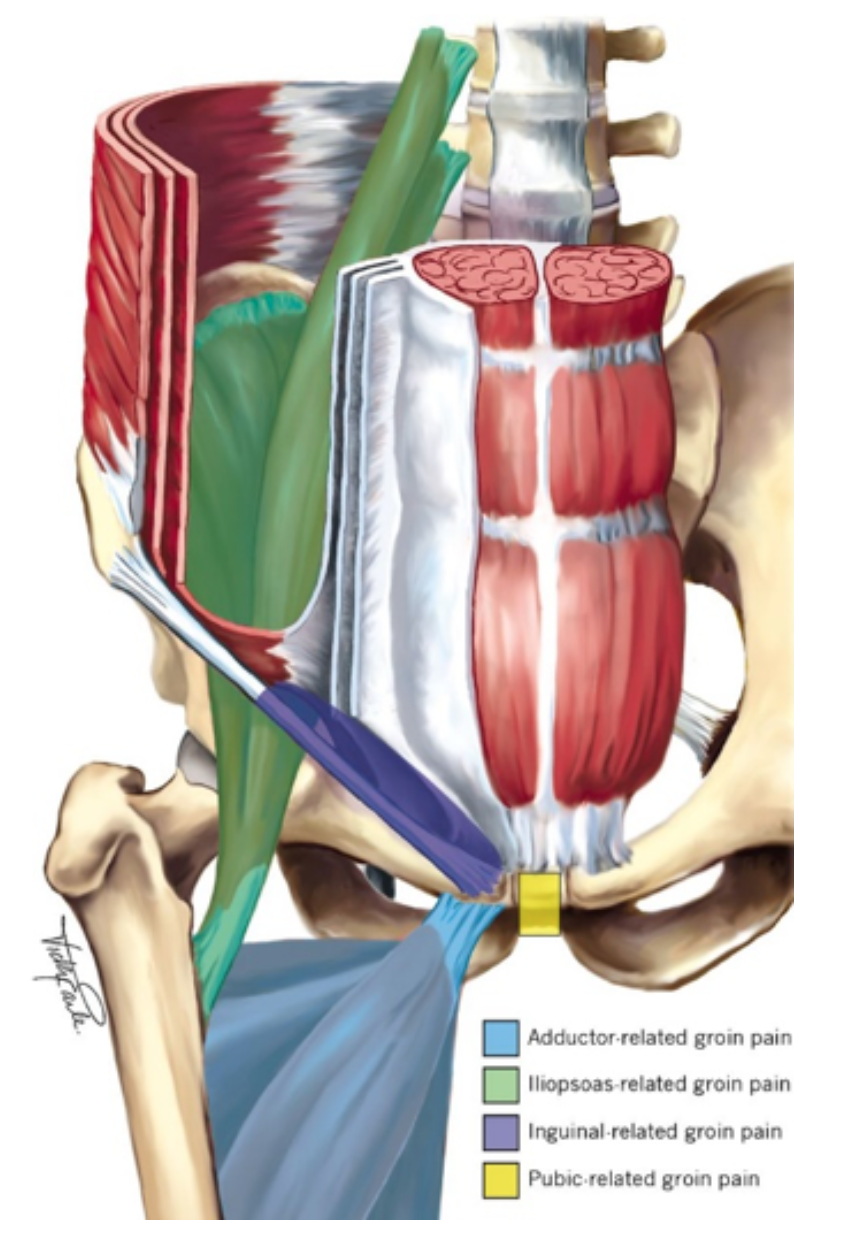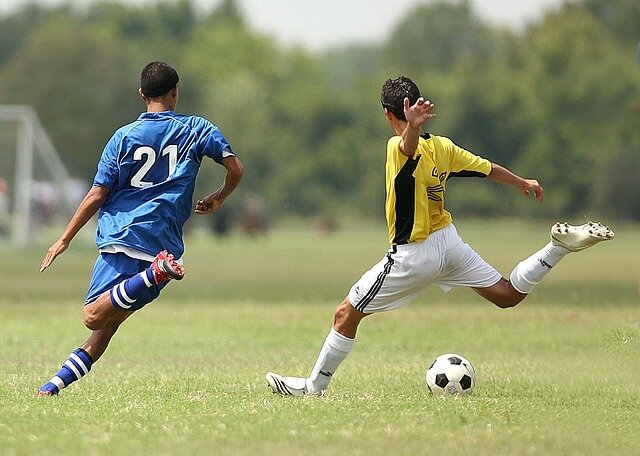Groin pain is a common injury. It has an incidence of 23% across all sports that requires the athlete to have quick movements. This can be seen more often with males than females. Groin injuries are most commonly found in activities involving change of direction, kicking and sprinting.
Athletic groin pain (AGP) refers to pain in and around the groin area – around the crease of the leg and hip, or lower abdominal region.
These are many structures around your groin that can cause pain. This is why it has often been difficult to give a specific diagnosis, but in 2015 definitions for AGP were decided upon by an international committee in Doha Agreement Meeting on Groin Pain. The meeting resulted with 3 major subheadings:
For athletes there are three main types (subcategories) of groin pain:
1. Defined clinical entities for groin pain
This type of groin pain can be identified by where the site of pain is. The specific areas of groin pain are:
Adductor related (blue)
Iliopsoas related (green)
Inguinal related (purple)
Pubic related (yellow)
For each entity to be identified as the cause of groin pain, pain must be present on palpation of the structure, as well as pain reproduced on muscle testing.
Having a specific diagnosis means that treatment and rehabilitation can be focussed on this problem area, likely making the treatment more successful.
2. Hip related groin pain
This describes pain related to the hip joint itself. It can be accompanied by mechanical symptoms such as clicking, locking or the feeling of giving way. A loss of hip joint range of movement could be indicative of:
Femoral acetabular impingement (FAI) - found in 20% of AGP presentations
‘Stiff’ painless hip – research has shown up to 85% of AGP cases present with decreased hip internal rotation in particular
Structural changes to the hip joint (such as Cam and Pincer morphologies)
3. Other causes of groin pain in athletes
Other causes of groin pain to be considered may include referred pain from another pathology, stress fractures, nerve entrapments or other medical causes.
To see how to manage Athletic Groin Pain, see Part 2 of this blog.
Take Care,
Annissa Harwood
B Science Physiotherapy (Hons)
References:
Weir, Adam & Brukner, Peter & Delahunt, Eamonn & Ekstrand, Jan & Griffin, Damian & Khan, Karim & Lovell, Greg & Meyers, William & Muschaweck, Ulrike & Orchard, John & Paajanen, Hannu & Philippon, Marc & Reboul, Gilles & Robinson, Philip & Schache, Anthony & Schilders, Ernest & Serner, Andreas & Silvers, Holly & Thorborg, Kristian & Holmich, Per. (2015). Doha agreement meeting on terminology and definitions in groin pain in athletes. British journal of sports medicine. 49. 768-74. 10.1136/bjsports-2015-094869.
Thorborg K, Reiman MP, Weir A, Kemp JL, Serner A, Mosler AB, HÖlmich P. Clinical Examination, Diagnostic Imaging, and Testing of Athletes With Groin Pain: An Evidence-Based Approach to Effective Management. J Orthop Sports Phys Ther. 2018 Apr;48(4):239-249.




